
Obdurodon is a genus of extinct monotreme. They appeared much like their modern day relative the platypus, except adults retained their molar teeth. Unlike the platypus which forages on the lakebed, Obdurodon may have foraged in the water column or surface.
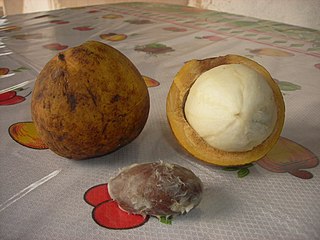
Platonia insignis, the sole species of the genus Platonia, is a tree of the family Clusiaceae native to South America in the humid forests of Brazil, Paraguay, parts of Colombia and northeast to Guyana; specially in Amazon Rainforest. Common names include bacuri, maniballi, naranjillo and bacurizeiro.
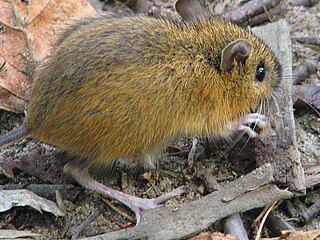
The woodland jumping mouse is a species of jumping mouse found in North America. Its Latin name means glen or wooded dell + big or strong feet + a distinguishing mark. This mammal can jump up to 3 m (9.8 ft) using its extremely strong feet and long tail.
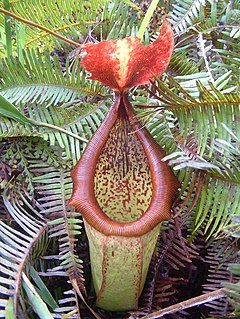
Nepenthes insignis is a tropical pitcher plant endemic to New Guinea and surrounding islands. The specific epithet insignis is Latin for "distinguished" or "remarkable".
The Mindanao montane forest mouse is a species of rodent in the family Muridae. It is found only in the Philippines.

The brown-capped weaver is a species of bird in the family Ploceidae. It is found in Angola, Burundi, Cameroon, Republic of the Congo, Democratic Republic of the Congo, Equatorial Guinea, Kenya, Nigeria, Rwanda, South Sudan, Tanzania, and Uganda.

The Cameroon scaly-tail, also referred to as the Cameroon anomalure, flightless anomalure or flightless scaly-tail, is a rodent species endemic to West Central Africa. The scientific literature has never reported observations of live individuals. The taxonomic classification of the species has been subject to recent revision.
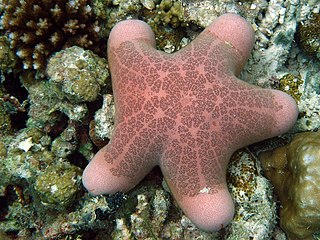
The Oreasteridae are a family of sea stars in the class Asteroidea.
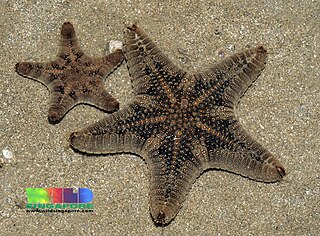
Goniodiscaster is a genus of sea stars in the family Oreasteridae.

Goniodiscaster acanthodes is a species of sea stars in the family Oreasteridae.
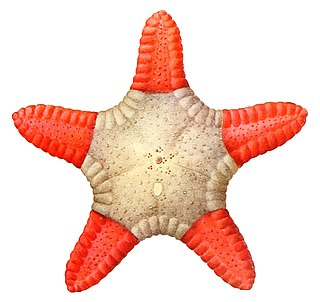
Goniodiscaster bicolor is a species of sea stars in the family Oreasteridae.
Goniodiscaster forficulatus is a species of sea stars in the family Oreasteridae.
Goniodiscaster granuliferus is a species of sea stars in the family Oreasteridae.
Goniodiscaster porosus is a species of sea stars in the family Oreasteridae.

Goniodiscaster scaber is a species of sea stars in the family Oreasteridae. Its scientific name was first published in 1859 by Karl August Möbius, who placed it in the genus Goniodiscus.
Goniodiscaster integer is a species of sea stars in the family Oreasteridae.
Goniodiscaster rugosus is a species of sea stars in the family Oreasteridae.
Goniodiscaster seriatus is a species of sea stars in the family Oreasteridae.
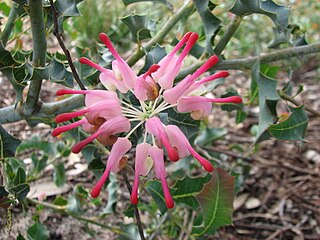
Grevillea insignis, commonly known as wax grevillea, is a shrub species which is endemic to the south-west of Western Australia. The species was first formally described in 1855 in Hooker's Journal of Botany and Kew Garden Miscellany.
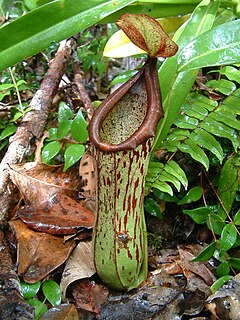
Nepenthes biak is a tropical pitcher plant endemic to the Indonesian island of Biak, after which it is named. Biak is a member of the Schouten Islands, located in Cenderawasih Bay, and is administered as part of Biak Numfor Regency, Papua Province. Nepenthes biak grows near sea level, usually on limestone coastal cliffs though occasionally as an epiphyte on mangrove trees.











